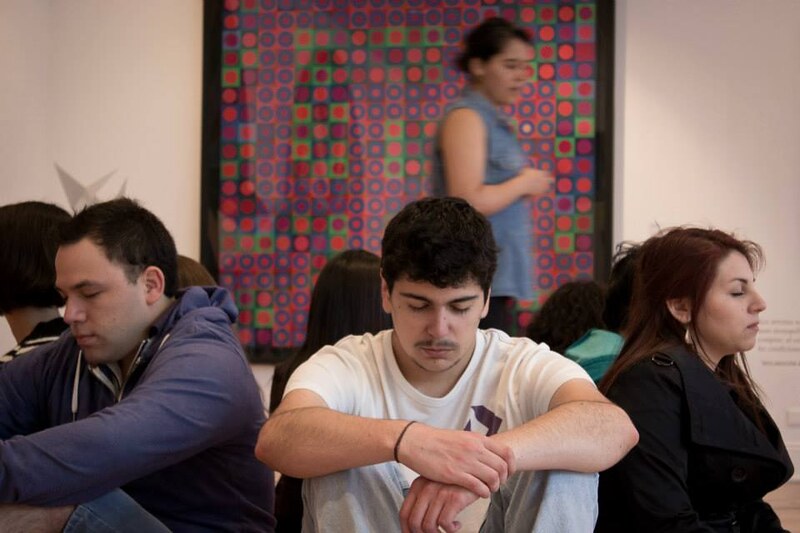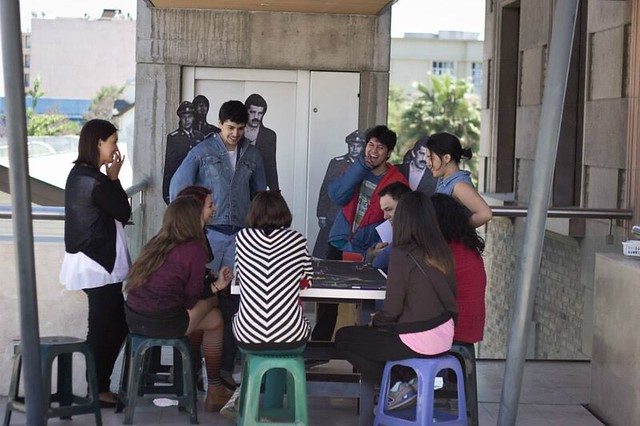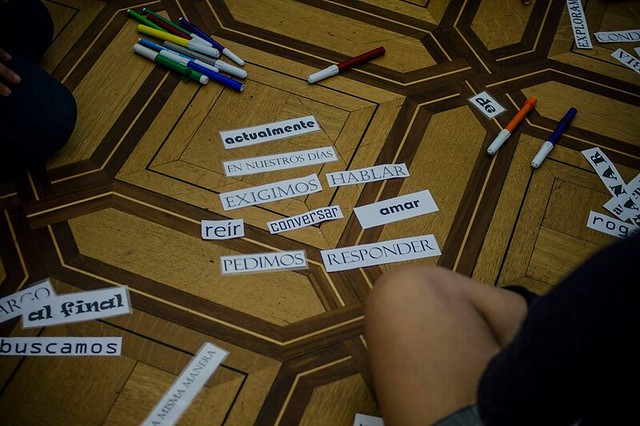This type of activity marked my introduction to the field of artistic mediation. My responsibility was to develop engaging activities for various segments of the public, involving modern art collections, object collections, heritage sites, and sites of memory. I had the opportunity to undertake this work more extensively at locations such as the Centro Cultural Palacio La Moneda (Santiago, Chile) and the Museo de La Moda (Santiago, Chile). However, my most substantial experience came when I had the chance to develop, study, reflect upon, and propose innovations at the Museo de la Solidaridad Salvador Allende. During my tenure from 2012 to 2015, I led the creation of the Public Programs Department.
During this period, I also had the privilege of enhancing these proposals through discussions with members of the Artistic Mediation Network, of which I was a part during my residency in Santiago de Chile.
One defining aspect of the work I proposed was to redefine the role of artistic mediation within the institution, fostering dialogue among all departments and reimagining our approach based on a critical vision. This vision aimed to connect audiences with collections and cultural institutions in dialogic and democratic ways, emphasizing and encouraging the active participation of all individuals. In practice, this translated into generating activities that went beyond mere reproduction and instead questioned both the institutions and the collections. It created spaces for public creation and research, allowing for a deeper connection with their contexts and realities.
Regarding the latter point, it’s essential to highlight that in Chile, people’s participation in cultural spaces is severely limited due to various factors linked to deep social inequality and centralization in the country. Therefore, a key objective was to create meaningful experiences for each visitor, particularly for elementary and secondary school students who, often for the first time and out of obligation, visited a museum. In other words, the first impression played a crucial role in shaping policies for access and democratization of culture.
In this context, we replaced the concept of a guided tour with that of a Conversational Tour, implementing strategies and tools that facilitated questions about what was being observed without imposing them. This approach opened up discussions and conversations about emerging ideas.

Introduction to the activity through exercises connecting with the body and space.


Exploration moments through exercises that invite active participation.


Conversation moments for sharing ideas and impressions.


Group debriefing, collective knowledge generation, new interpretations
We also develop Experimentation workshops, providing an opportunity to engage in artistic creation exercises. The aim was to depart from the notion of merely copying or replicating what is seen in the exhibition (a very common practice in museums that days), and break that moment to follow the path of a creative proposal. ‘The Anti-Workshop’ was an activity that allowed us to explore through a proposal with performative characteristics. There were two scenarios: initially, groups engaged in a very traditional and structured activity (coloring a reproduction of one of the works from the collection), during which we played the roles of stern and rigorous instructors. Subsequently, the group transitioned to a space equipped with various materials, and the role of the teacher/mediator vanished, with the sole instruction being ‘no words allowed’

We also proposed the creation of Exploration Games specifically designed for children (with the option for adults to participate as well), focusing on play as a methodology for discovery and exploration.
During the development and implementation of these programs and activities, as a mediation team, we were able to stimulate reflections and discussions that allowed us to explore and experiment with these formats. At this juncture, I would like to highlight the work undertaken for the “Block Mágico” exhibition, curated by Soledad García and Brandon LaBelle. Thanks to our seamless collaboration with them, we were able to introduce a performative tour. Visitors navigated the artworks accompanied by a character who presented them with challenges along the way.


The work I undertook during my tenure at the MSSA (Museo de la Solidaridad Salvador Allende) was the result of a collective effort committed to improving and professionalizing the Education Department, which later transformed into the Mediation and Audiences Department. A crucial aspect of this transformation was the opportunity to dedicate working hours to research, experimentation, and the systematic documentation of our experiences as mediators.
Thanks to this endeavor, I had the chance to participate in several training programs and also to share our experiences through talks and presentations.
Texts and presentations (in Spanish):
